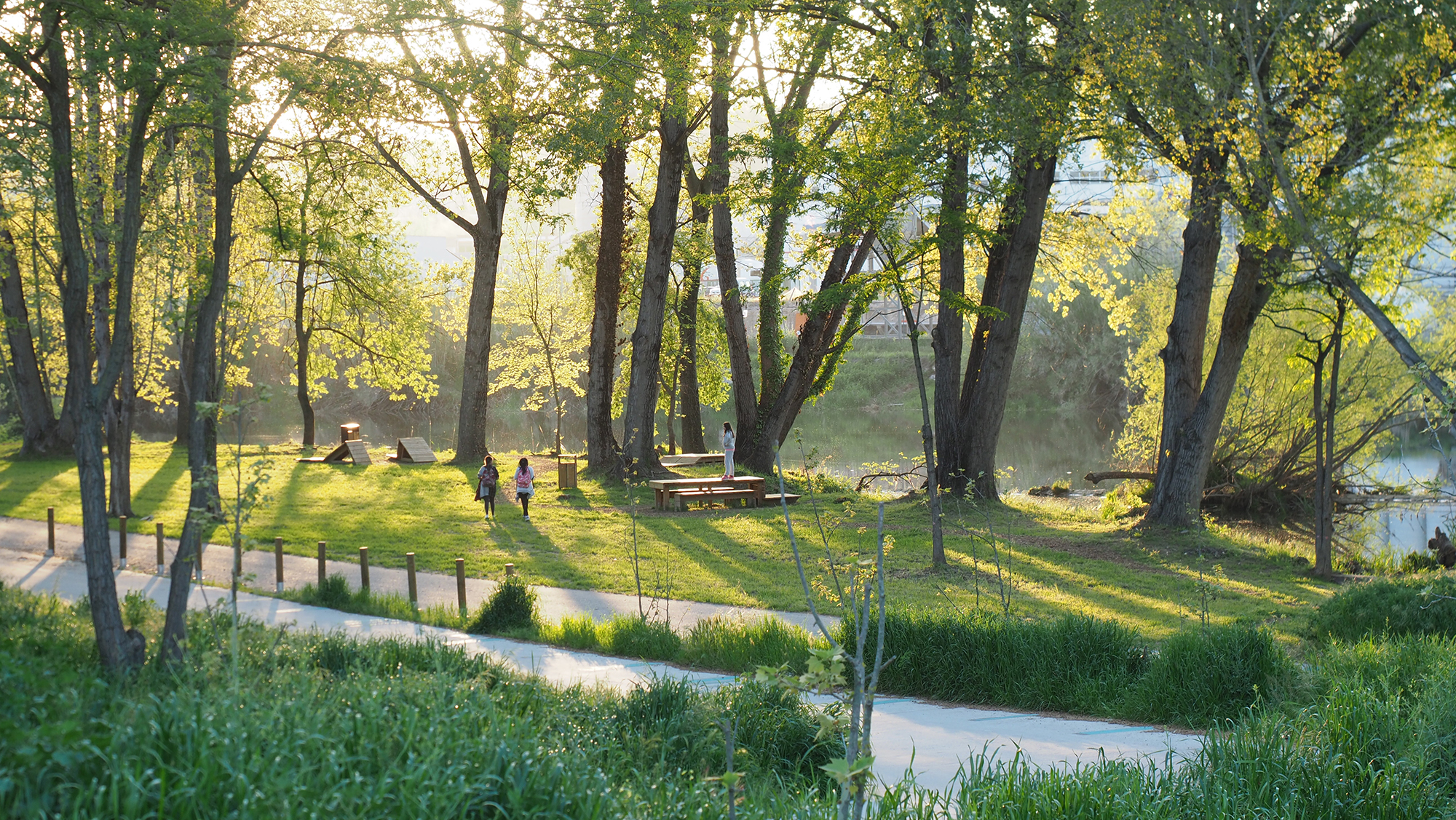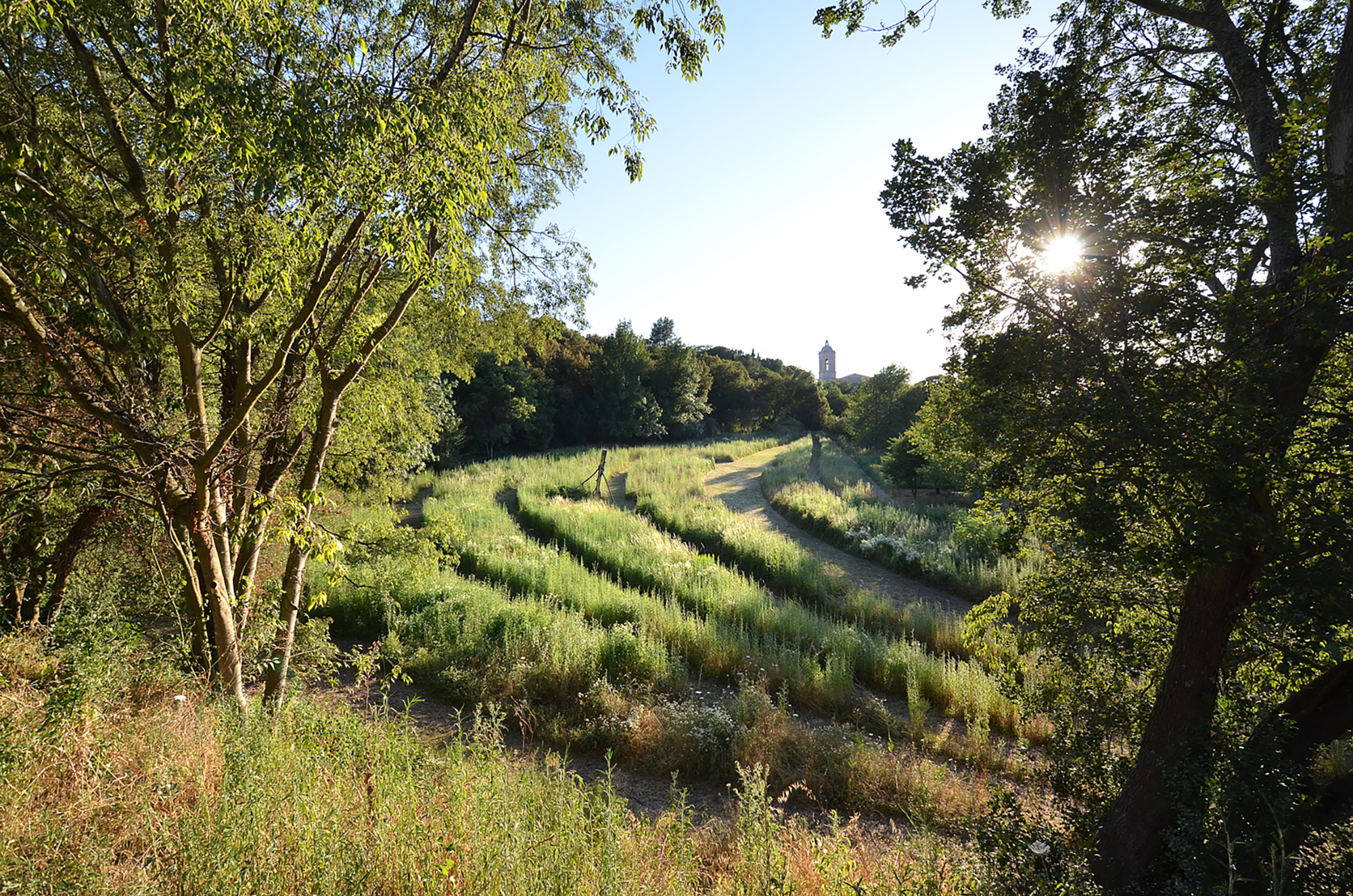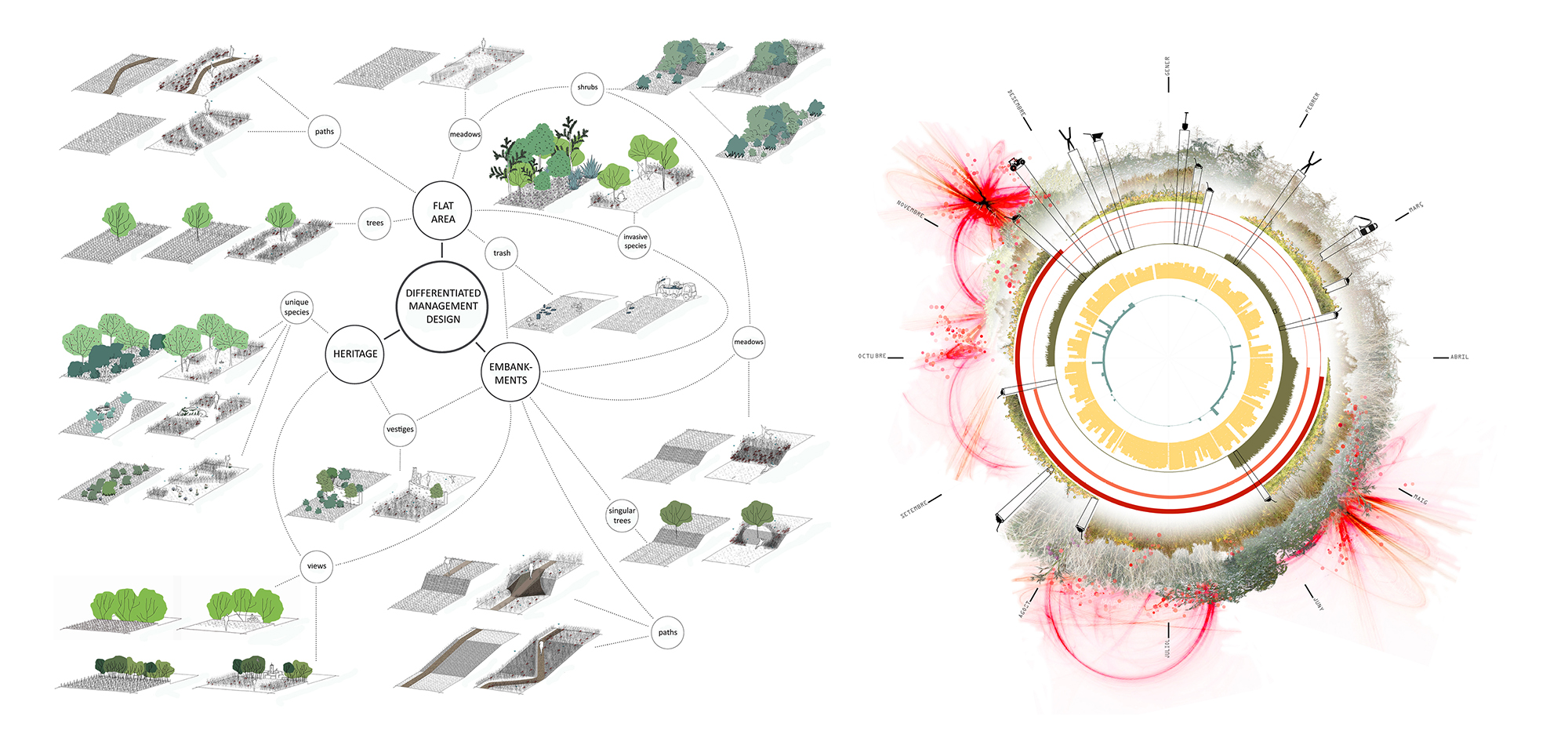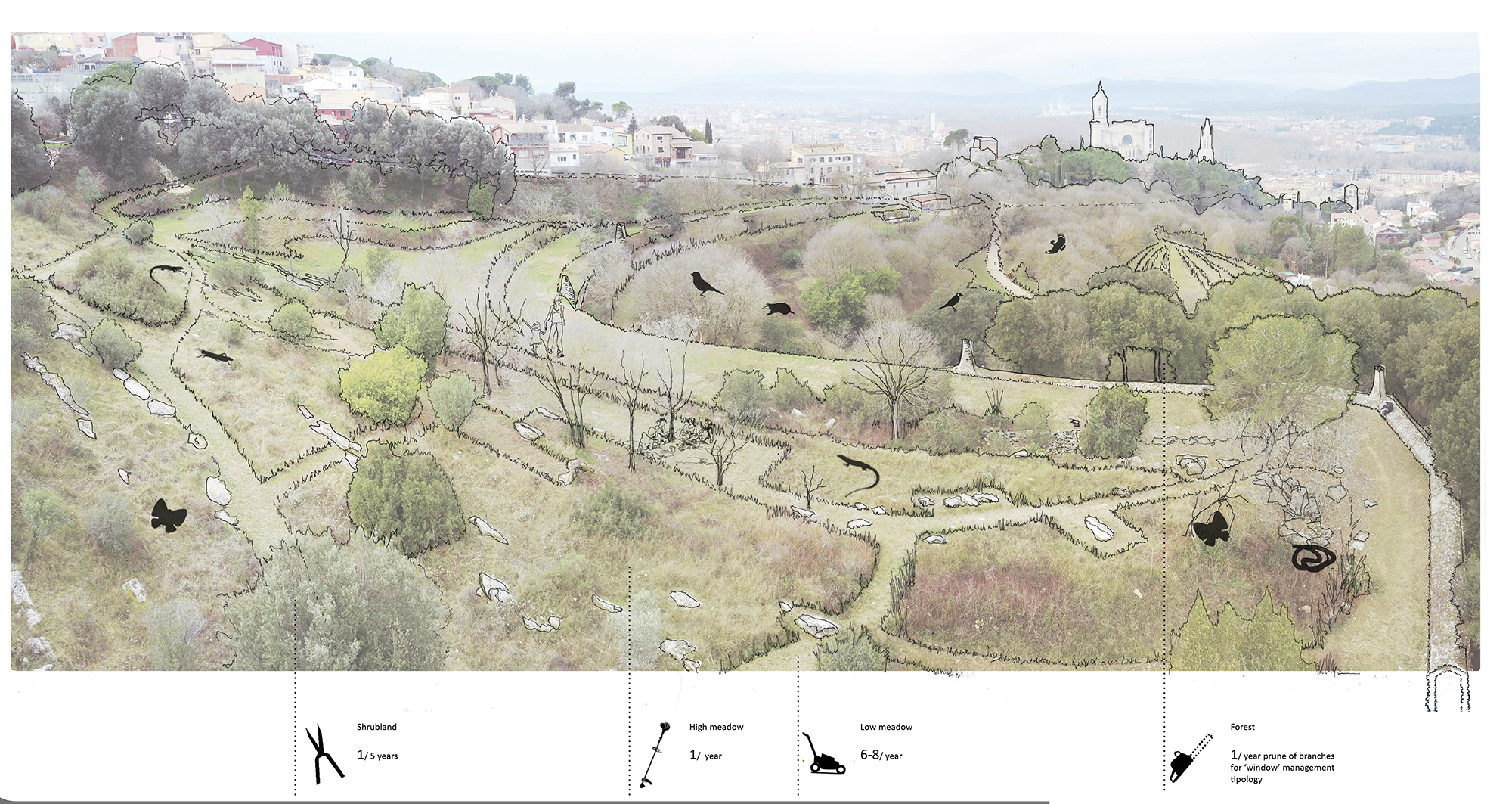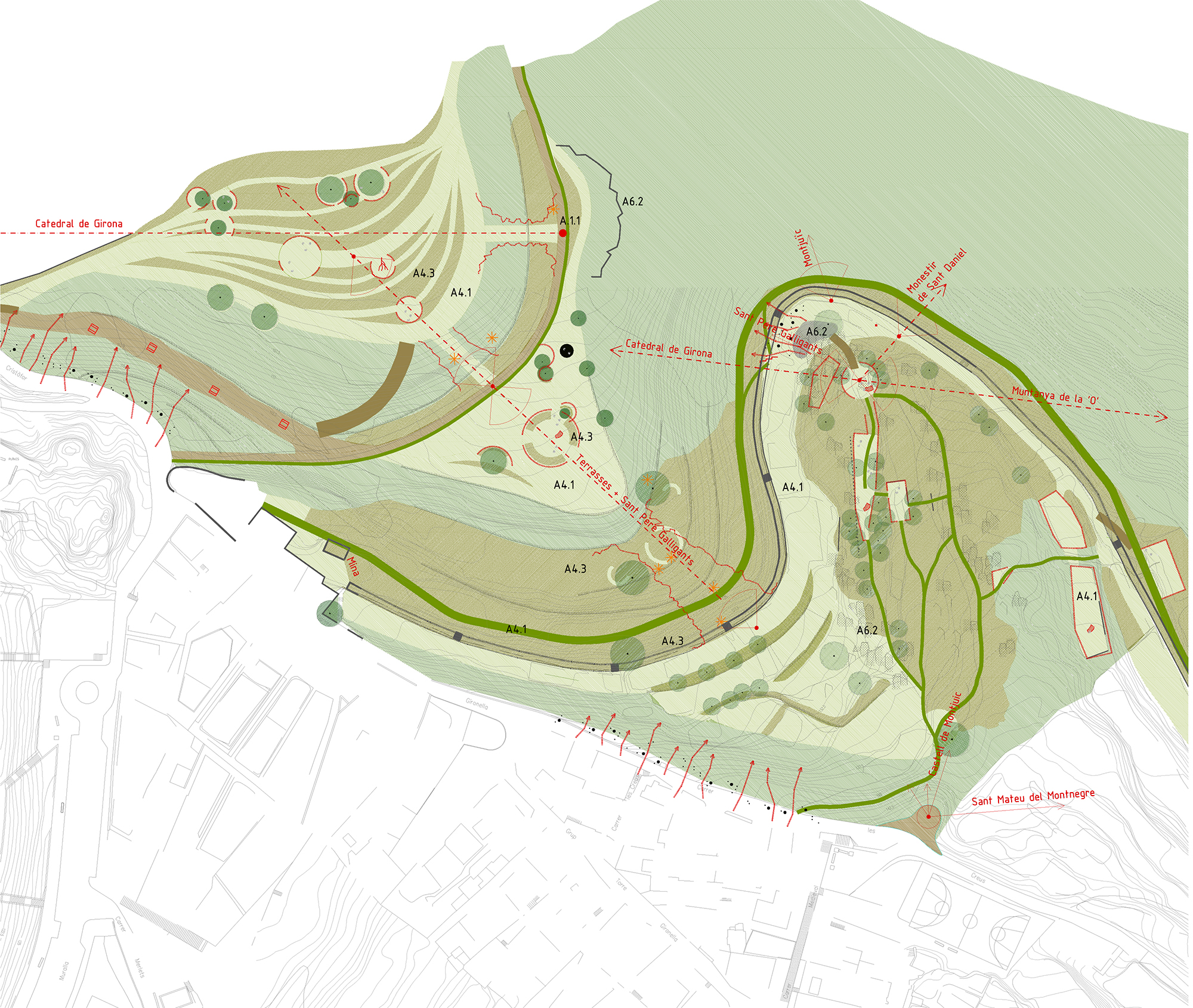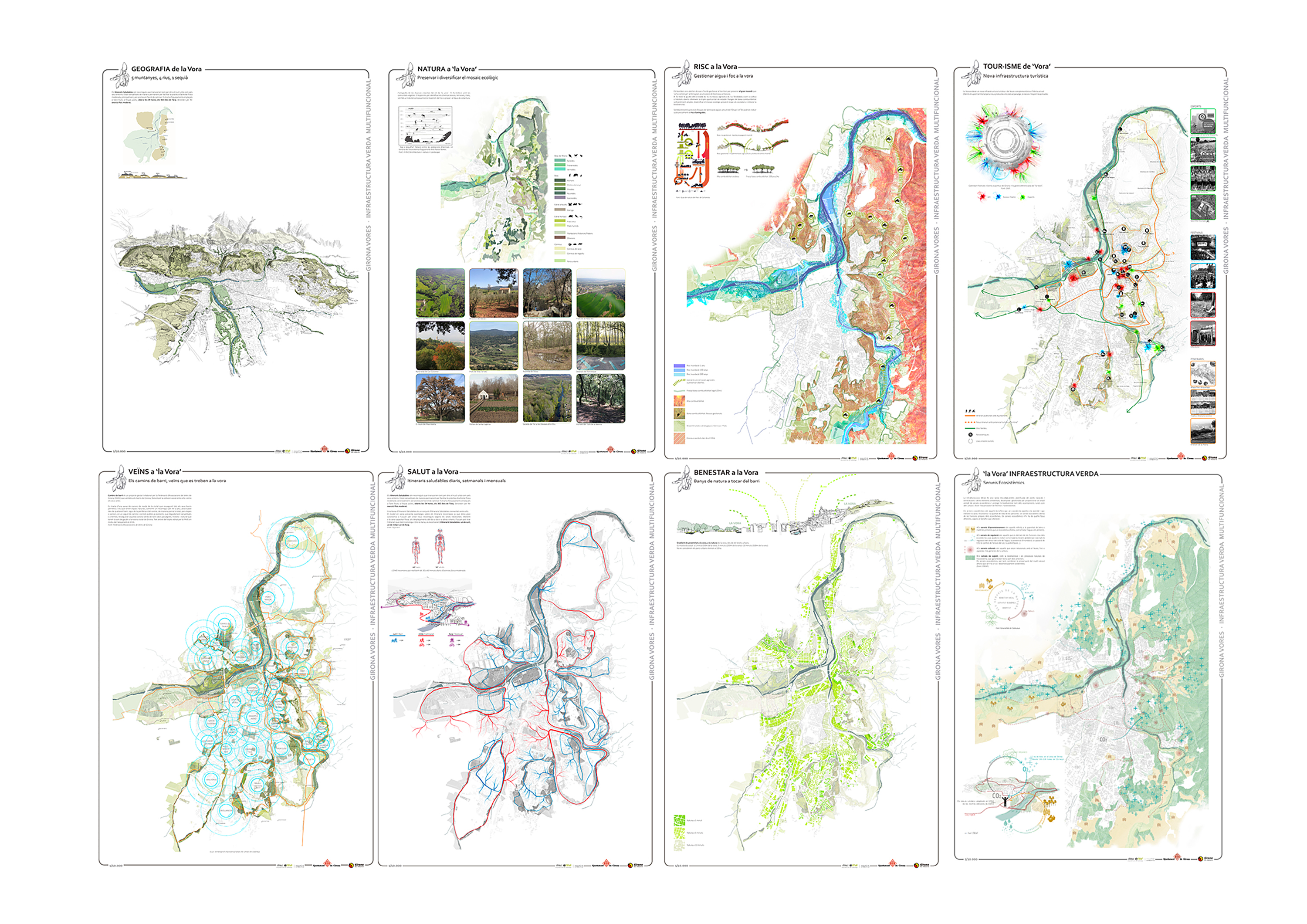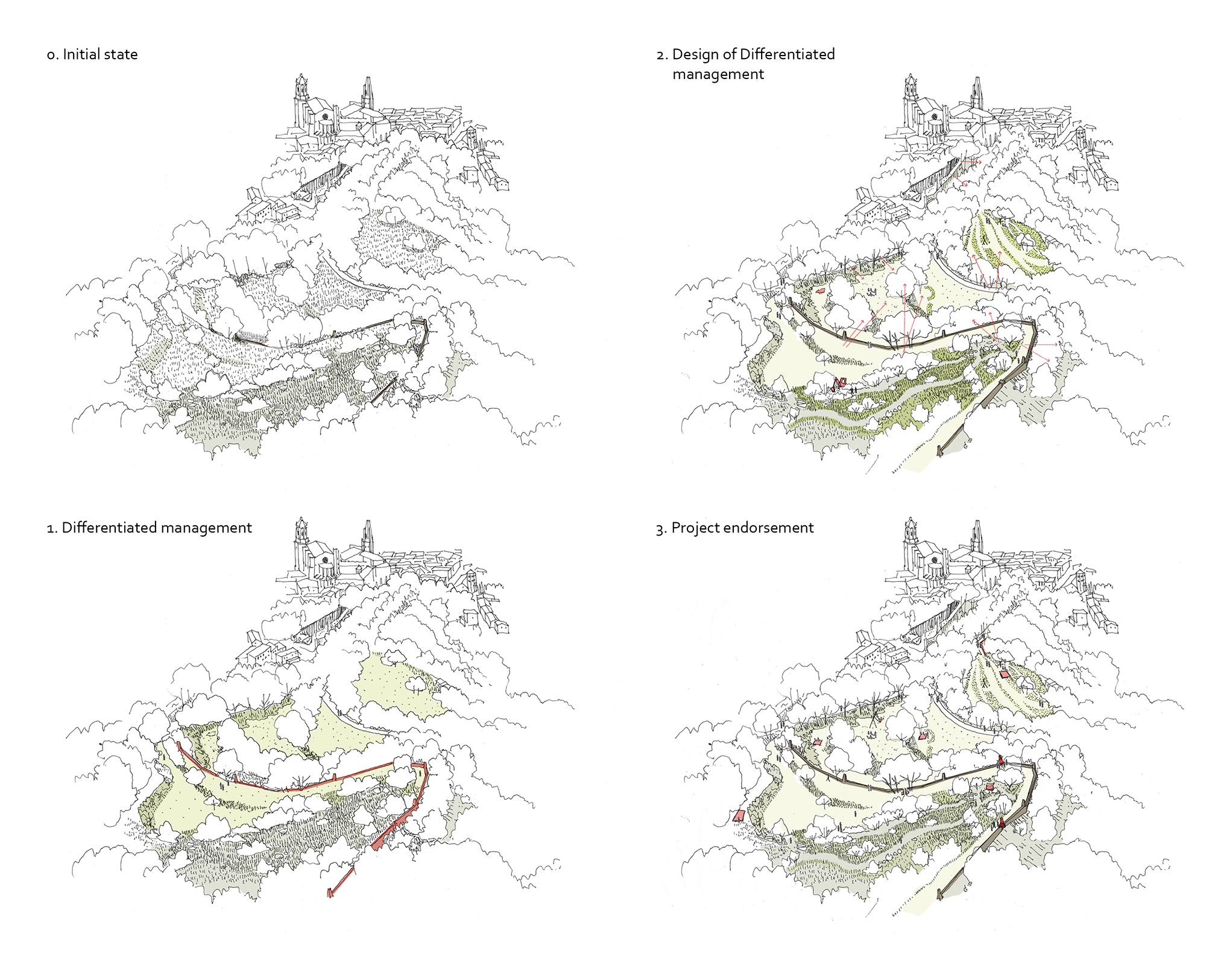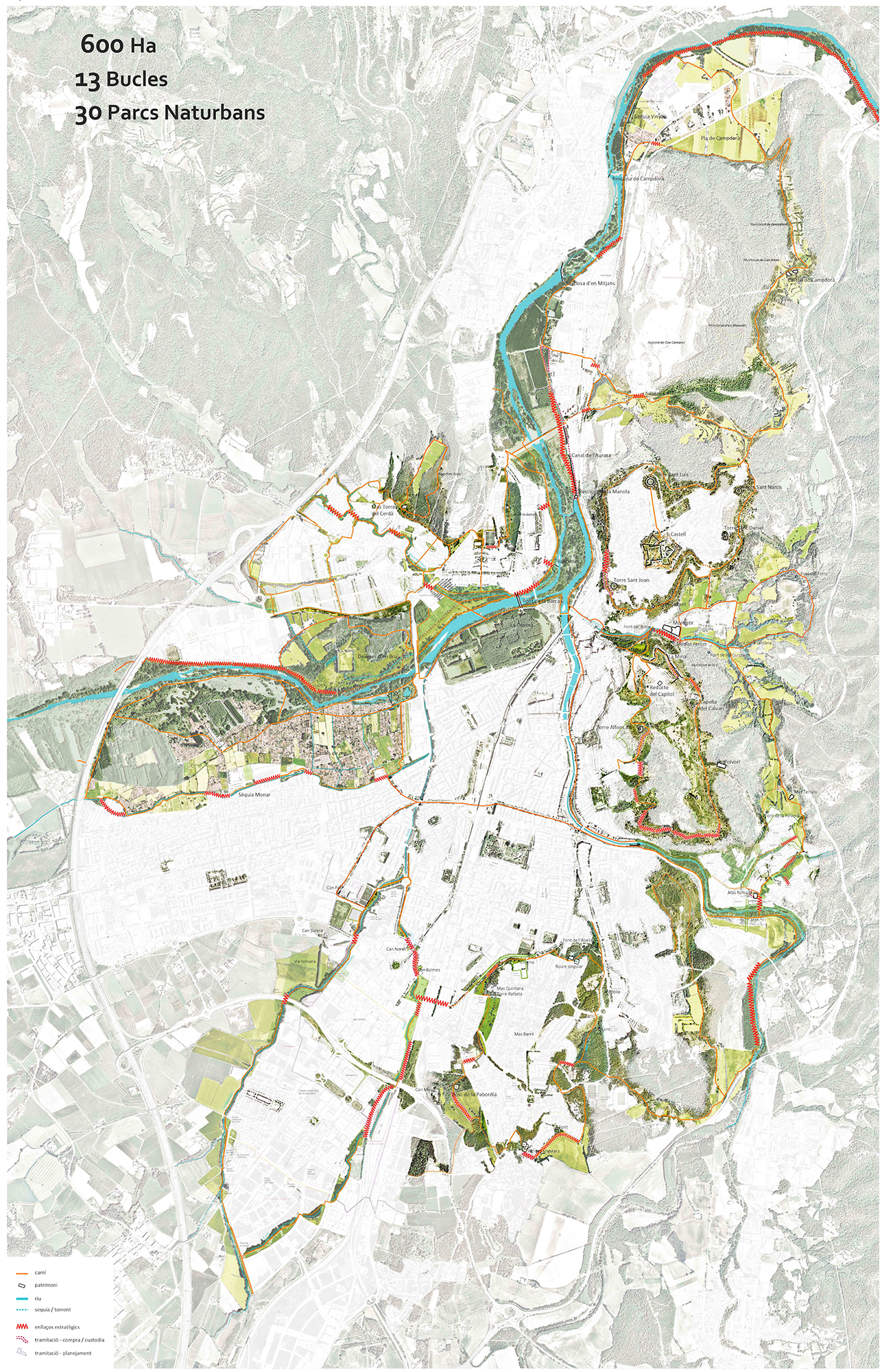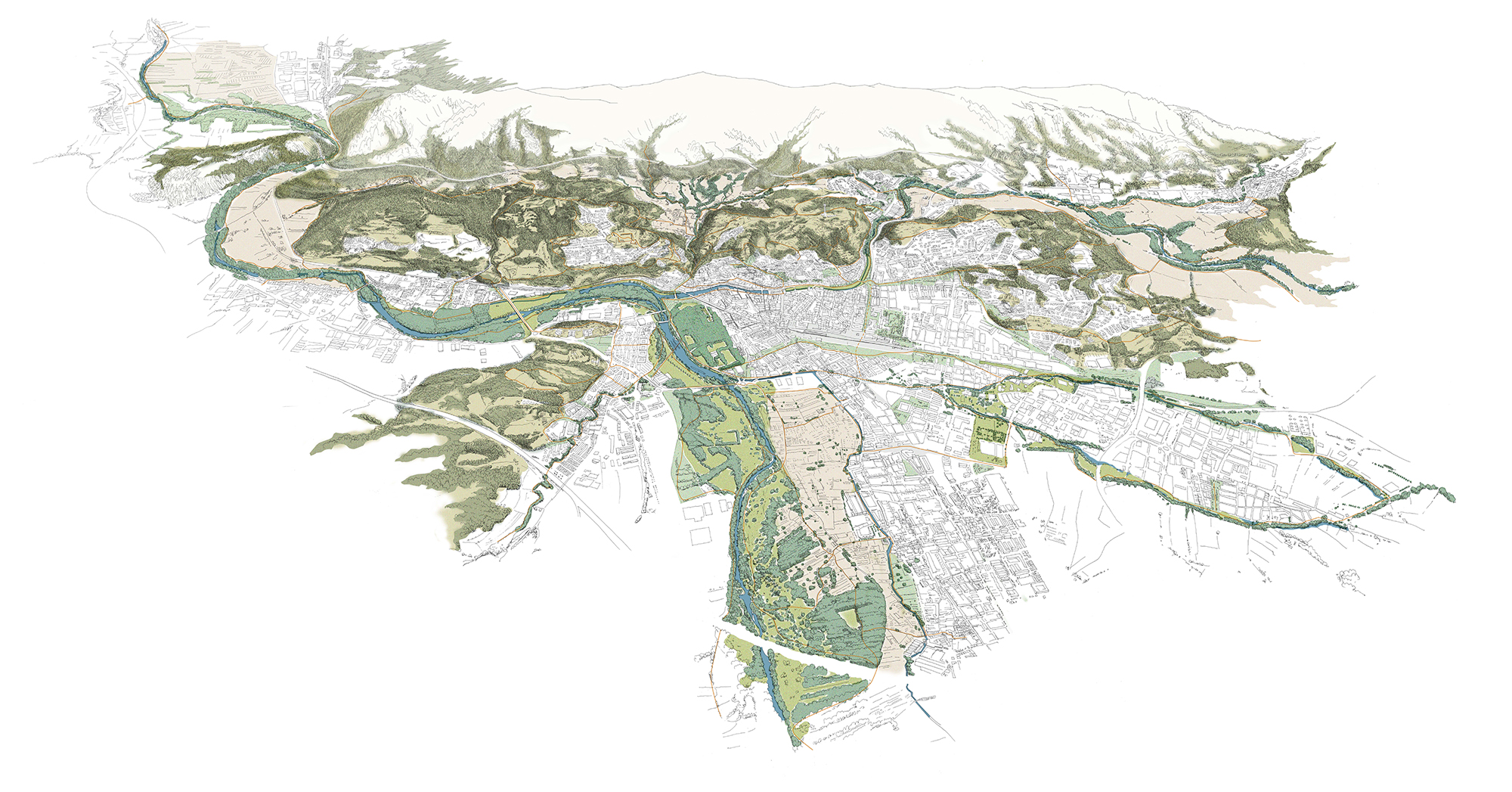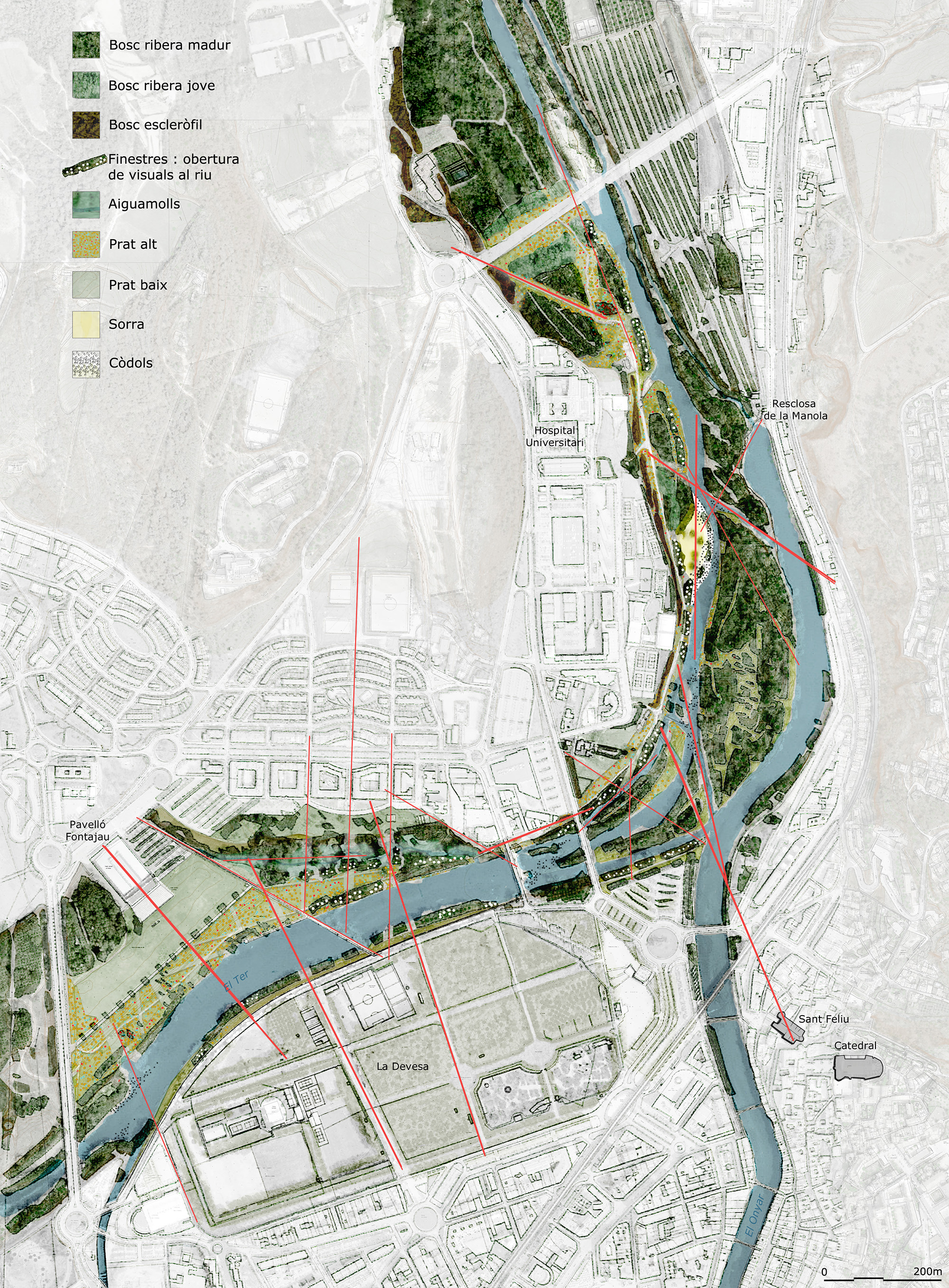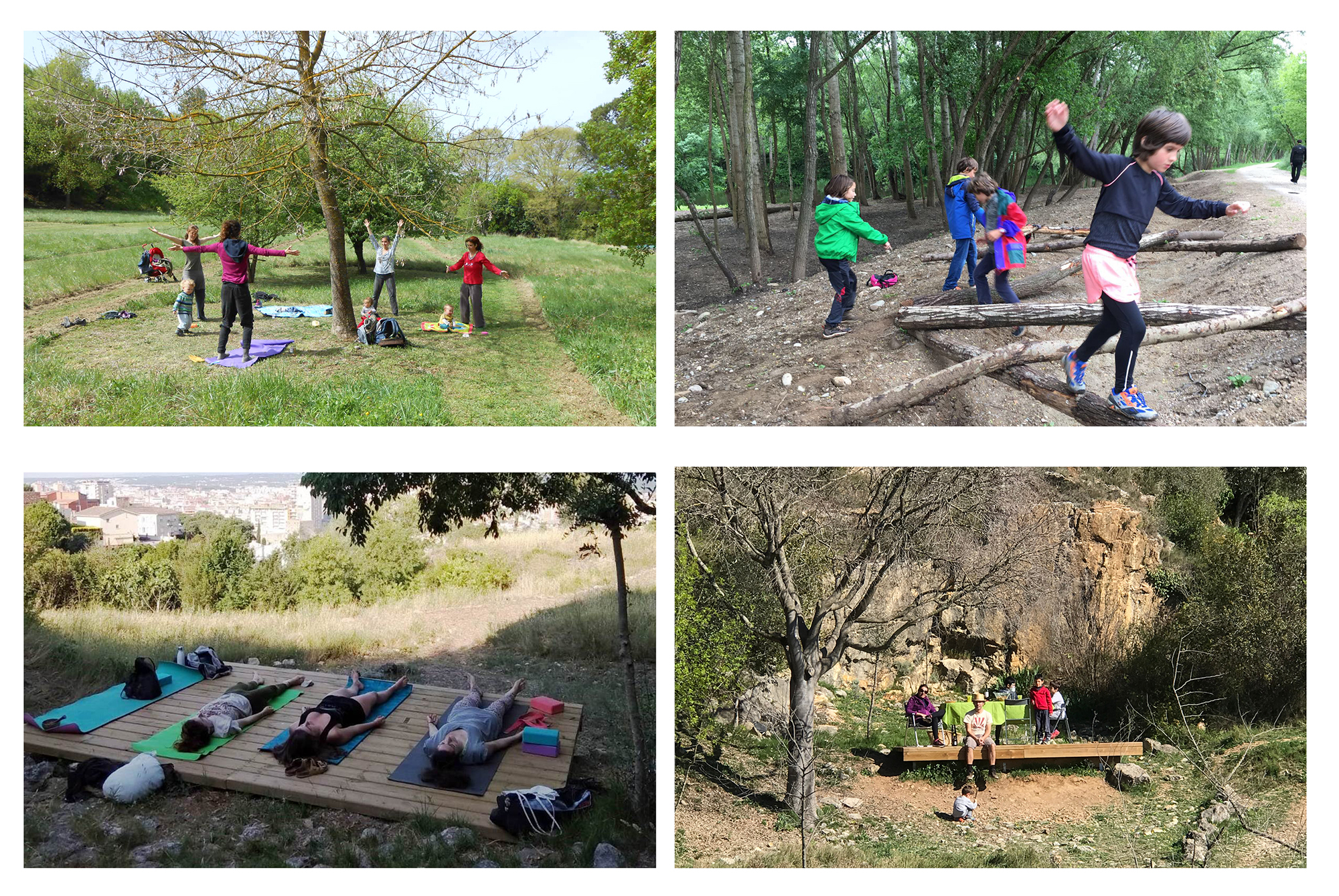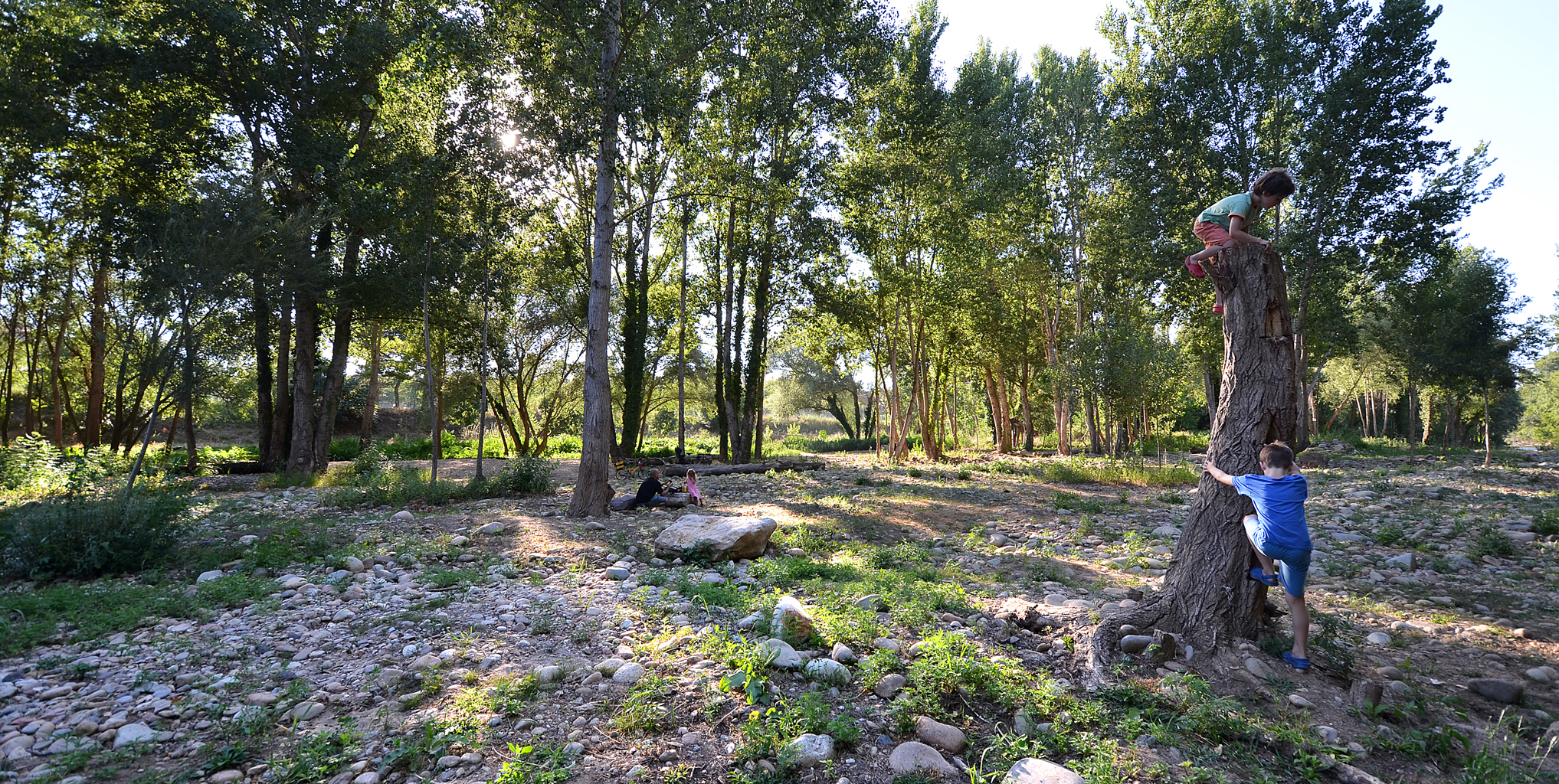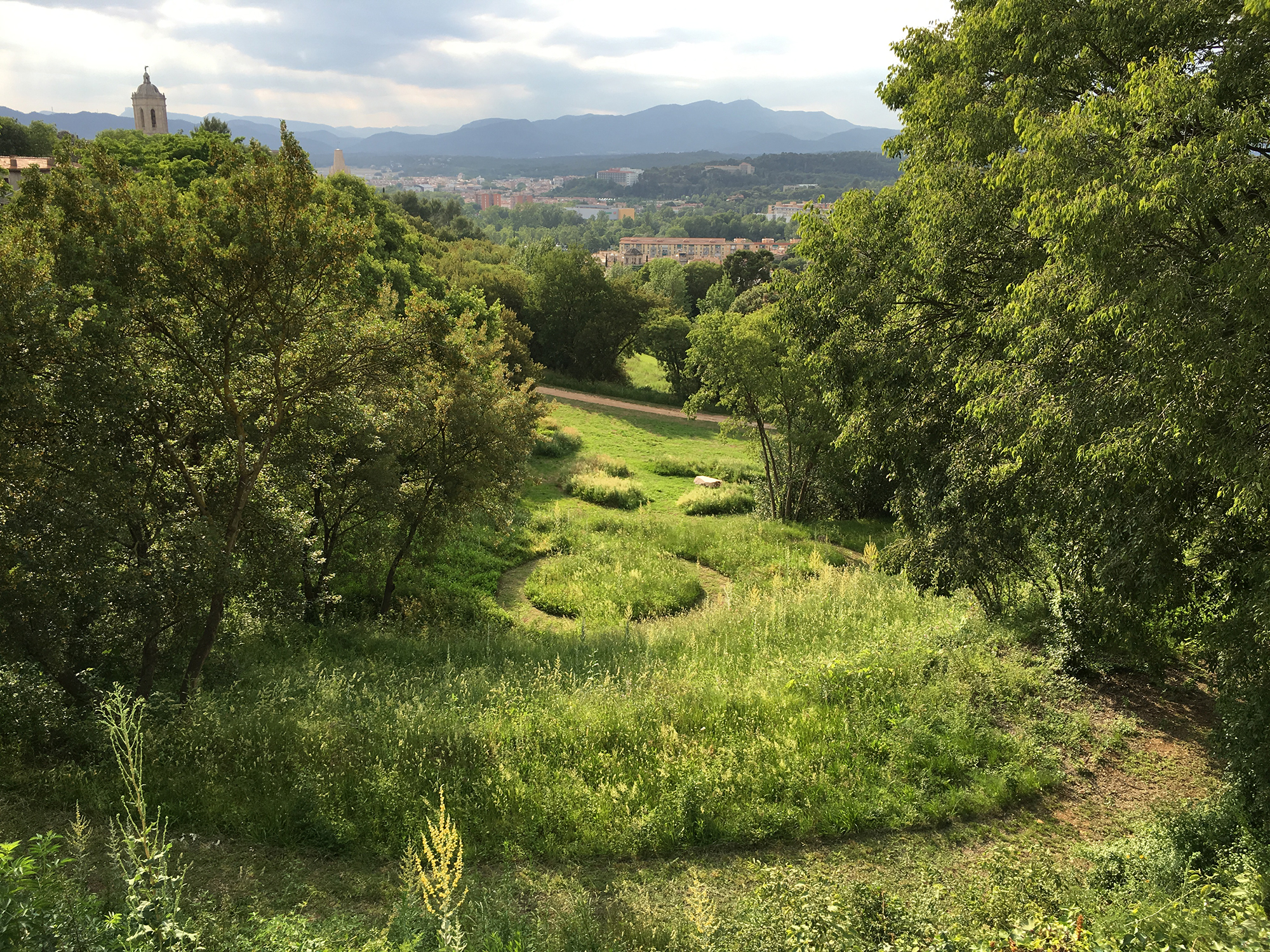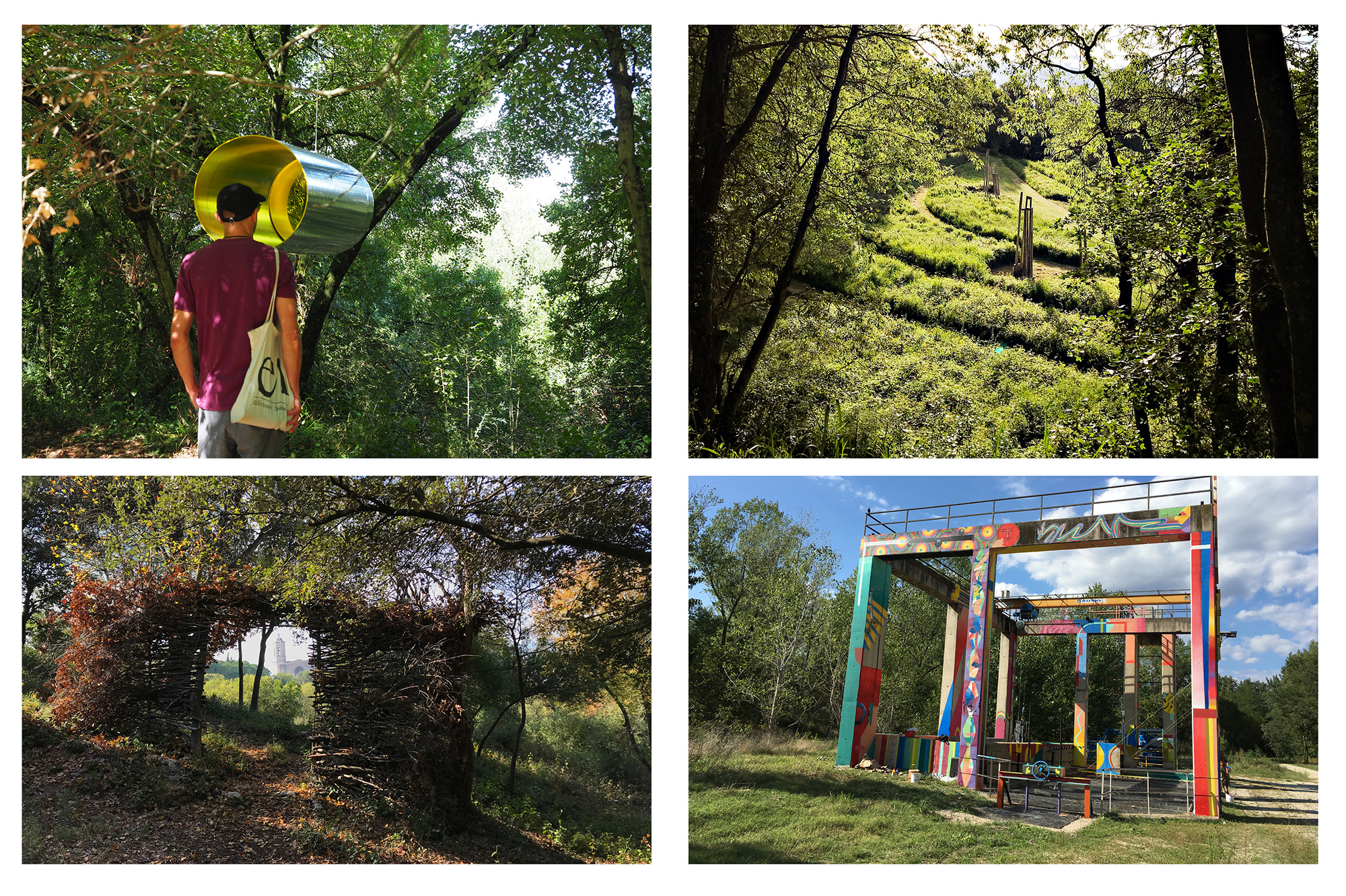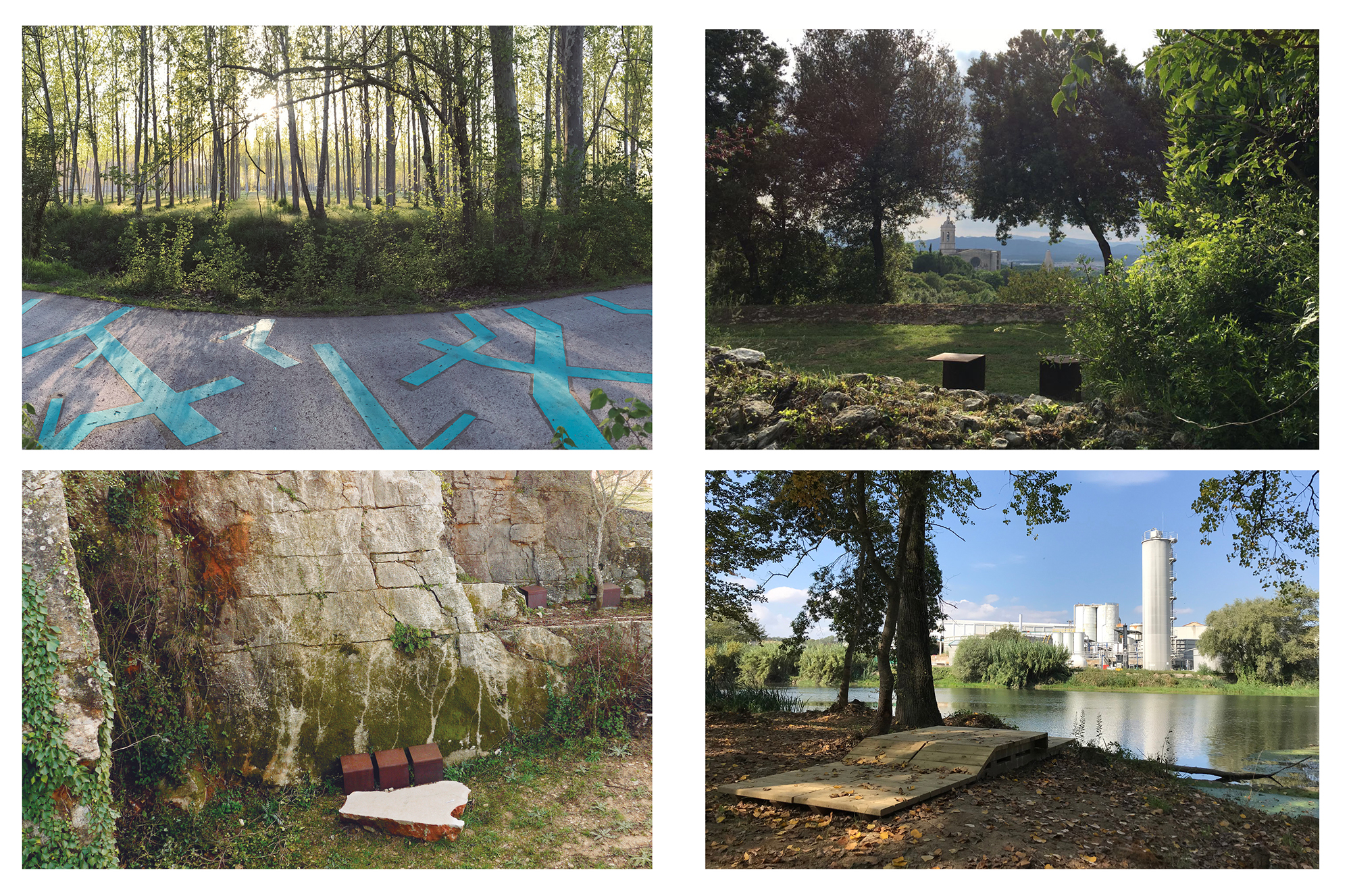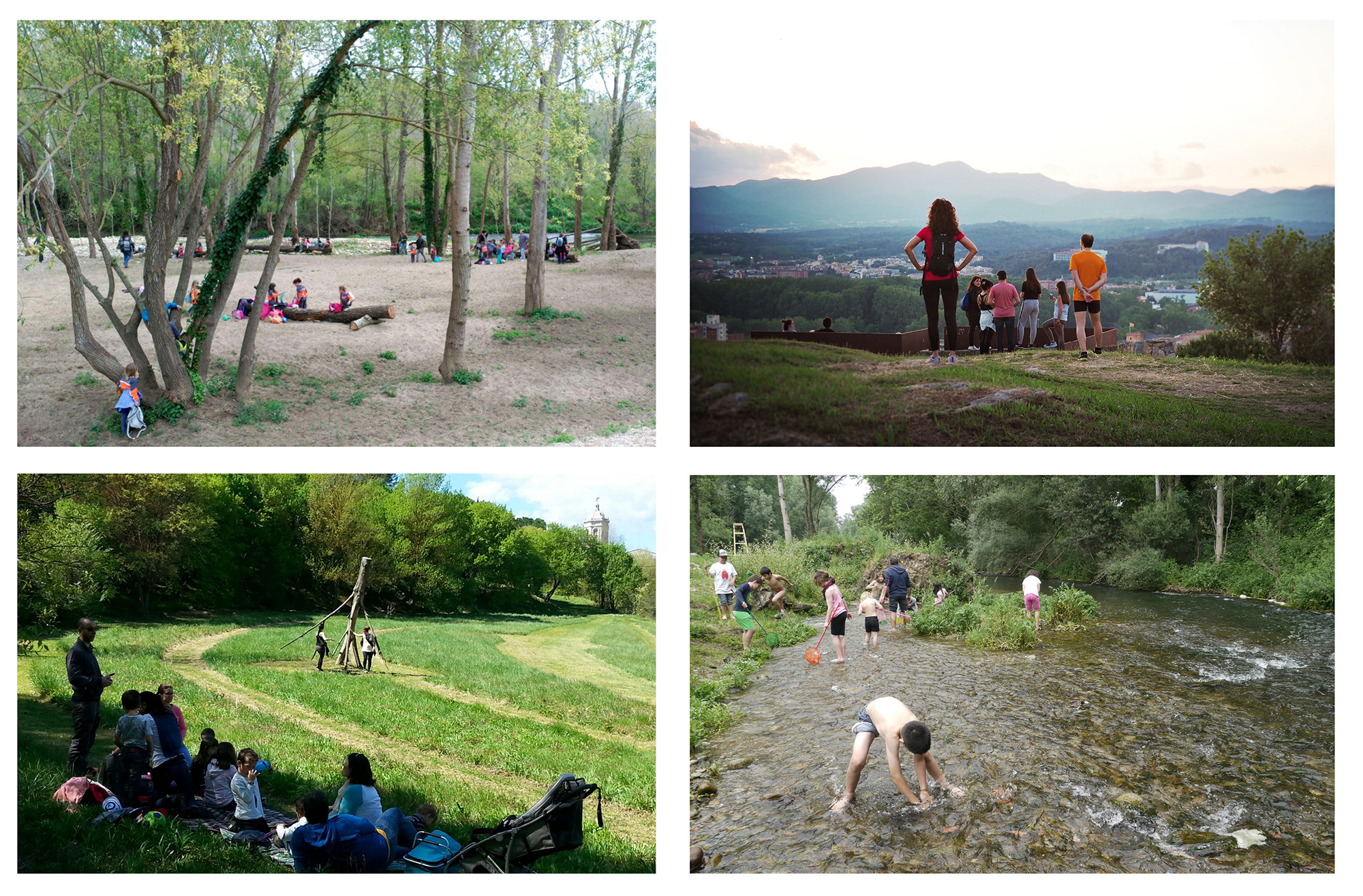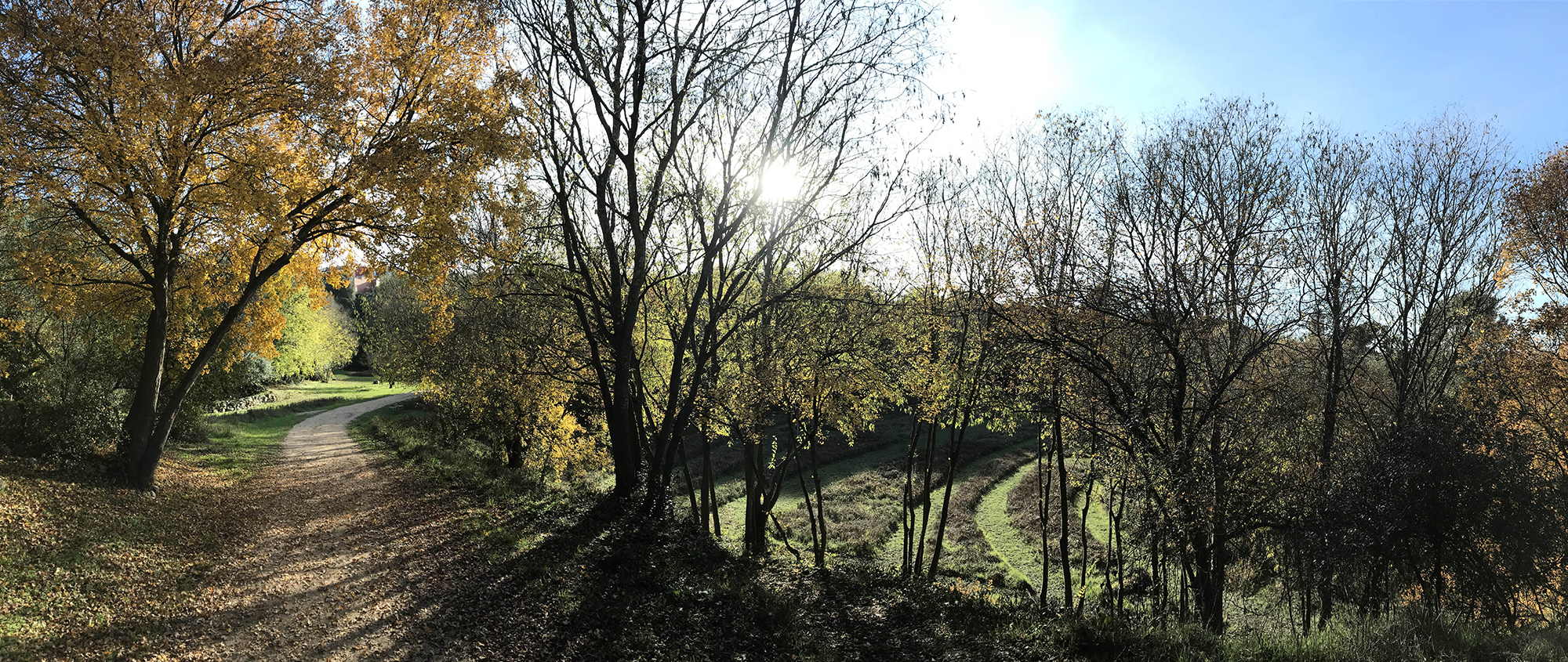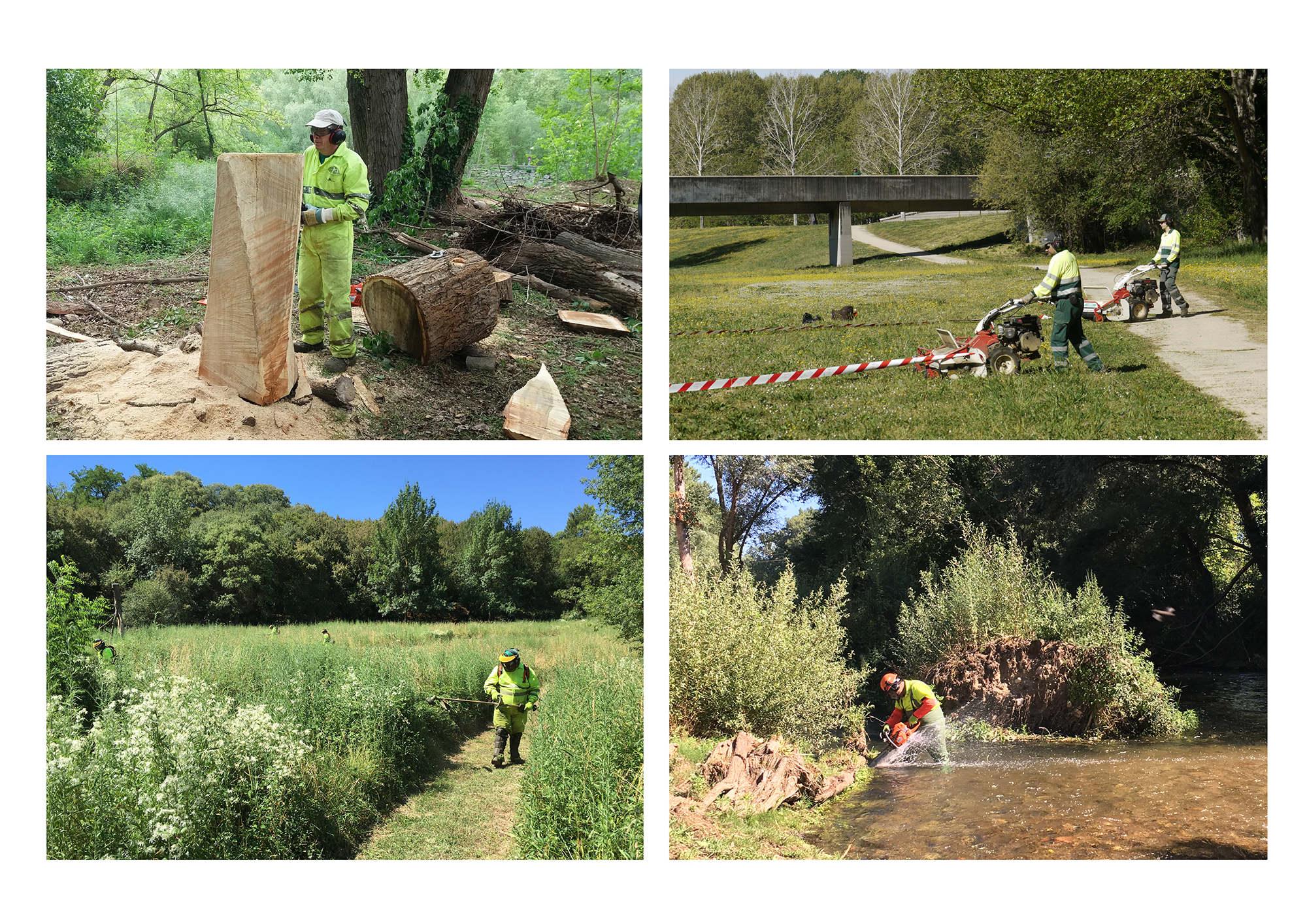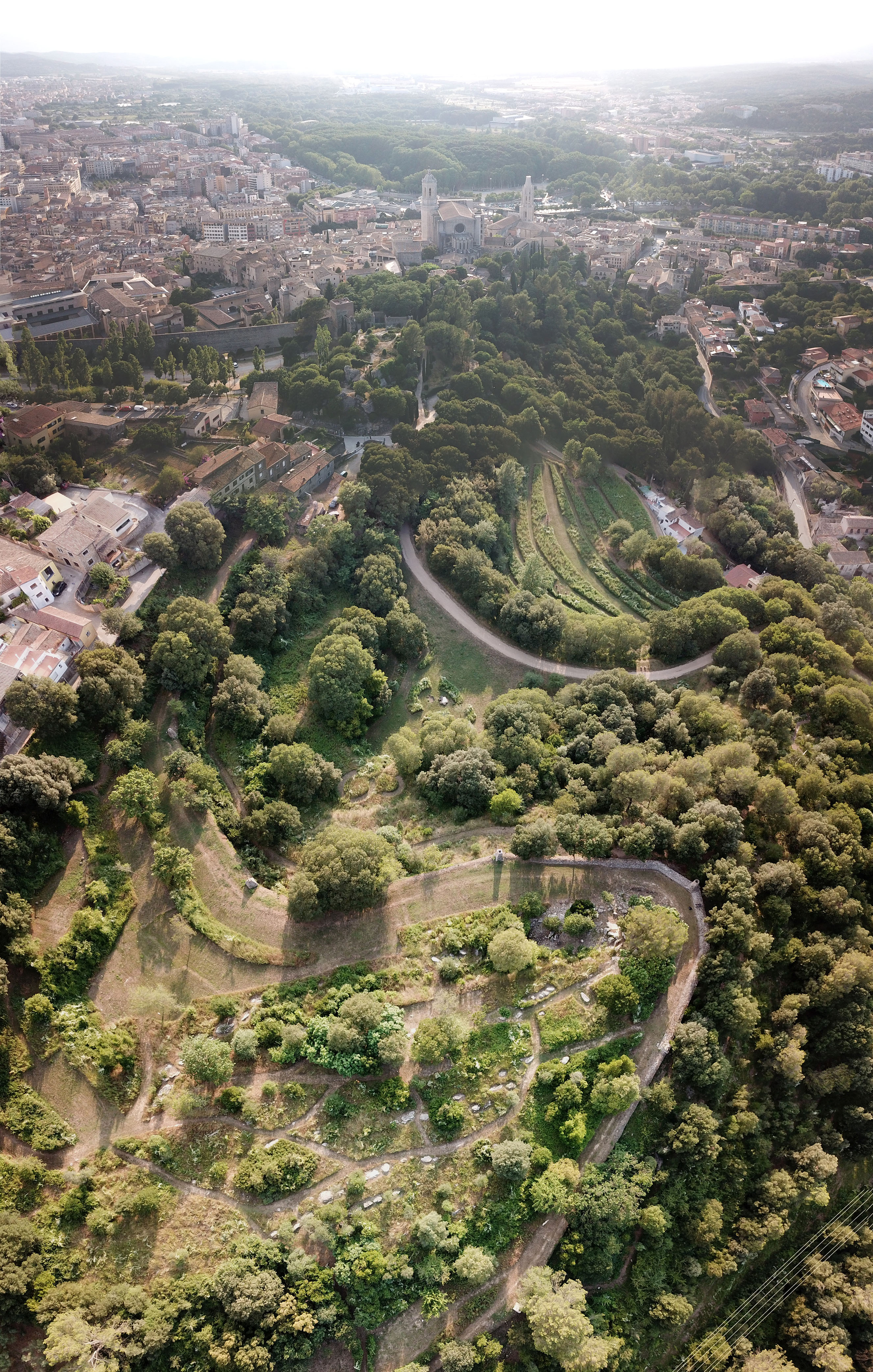Previous state
Girona has some 100,000 inhabitants and a rich mosaic of landscapes that surround it: with four rivers, five limestone hills with diverse forests depending on their orientation – covered in olive trees, oaks, pines, and maples – fertile plains, meadows, and a fabulous ethnological heritage. Until 2014, these resources right in its backyard went largely unnoticed. Most of them were neglected, and it was common to find them littered with rubbish that also increased the risk of forest fires. These public spaces did not exist in residents’ minds or on the political agenda; they didn’t even appear on city maps.
For years, the City Council's Department of the Environment had carried out fire prevention and clean-up measures that consisted of clear-cutting once or twice a year, permitting only temporary use and occupation of these nearby natural landscapes. In this context, Estudi Martí Franch approached the City Council with a proposal to carry out a pilot project to replace maintenance processes with the creation of spaces to open seven hectares of terraced landscapes adjacent to the historic centre for citizen use.
Aim of the intervention
La Vera de Girona is a series of projects and initiatives aimed at recovering, developing and managing derelict peri-urban green spaces to convert them into a multi-use green infrastructure. The project advocates an equitable and distributed city model, counteracting the traditionally hierarchical and centralised nature of urban public space to extend it toward the periphery. The low-cost, low-tech approach means the project can be implemented on a large scale, making it accessible for all neighbourhoods and generating the largest public space in the city.
The project foresees three main operational challenges: first, it intends to condition 600 hectares of natural spaces around the city so that they will be available to all living beings, including humans; in other words, it will multiply eightfold the current surface area of urban green spaces for use by citizens. Second, it aims to involve the citizens of Girona in the discovery, occupation and appreciation of these recovered landscapes. And, finally, it seeks out a new hybrid aesthetic, which is neither excessively urban nor too wild, which offers citizens both more intimate spaces and open ones that invite different kinds of uses.
Description
The process began with a series of pilot projects that were carried out in conjunction with the municipal team. These low-tech, low-cost interventions, which provided quick and tangible results, served as the foundation to propose a reverse engineering effort, such that a large-scale infrastructure project could emerge from the knowledge gained through the pilot projects. Landscape maintenance is understood as a design practice, and the landscape management plan was developed in keeping with ecological principles to allow diversification and immediate use of the varied agroforestry mosaic that borders on the municipality. In this process, the environmental specialists and the municipal landscape experts become co-designers, executors and managers of the project. The average cost of these interventions ranges between €1 and €3 per square meter per year.
Assessment
In this intervention, public space is not understood as a setting, but as a process that advocates the green extension of the city – a process rooted in a recurring low-cost, low-tech maintenance practice. As a result, a new natural aesthetic can emerge, somewhere between wildness and order, that can be freely occupied by unexpected forms of citizen participation along the different paths. The project develops a new way of managing the spaces between the natural realm and the urban environment, while making the most of their environmental, landscape and heritage features.
[Last update: 16/11/2022]


